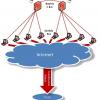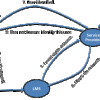Strategic advice to leverage new technologies
Technology is at the heart of nearly every enterprise, enabling new business models and strategies, and serving as the catalyst to industry convergence. Leveraging the right technology can improve business outcomes, providing intelligence and insights that help you make more informed and accurate decisions. From finding patterns in data through data science, to curating relevant insights with data analytics, to the predictive abilities and innumerable applications of AI, to solving challenging business problems with ML, NLP, and knowledge graphs, technology has brought decision-making to a more intelligent level. Keep pace with the technology trends, opportunities, applications, and real-world use cases that will move your organization closer to its transformation and business goals.
Recently Published
Reframing Frameworks: Part III -- The Information FrameWork
Agile Code
Much like agile requirements aim toward a goal, agile engineering practices help teams write code that meets the goals of an iteration and changes direction easily. To be an agile team, you need agile code. The agility of a code base is related to the architecture, development practices, and the delivery model. As working software is the main way of evaluating progress on an agile project, agile engineering practices can drive agile planning techniques when they are lacking.
Achieving Balance in Agile Adoption
In addition to changes in day-to-day practices, being agile requires a cultural shift across your organization. This Executive Update discusses how to balance agile values and practices when transitioning to an agile approach by using as examples three of the more common practices: pair programming, issue tracking, and unit testing.
What's New in TOGAF 9.1?
The threats just keep coming in this new, interconnected world. DDoS attacks, internal security breaches, and even politically motivated "hacktivism" all but ensure that your organization will experience a security incident. Don't think if, think when.
Over the past 12-15 months, there have been numerous high-profile distributed denial of service (DDoS) attacks launched against very prominent organizations. The motivation of "hacktivism," combined with the swiftness with which these attacks can be launched and redirected at other organizations, has caused many in the information security industry to rethink the threat landscape.
On that long list of venerable institutions primed for a high-tech overhaul, higher education is near the top. Its shortcomings are much discussed: universities are expensive, inaccessible, inflexible, and out of touch with the needs of students and the world economy.










